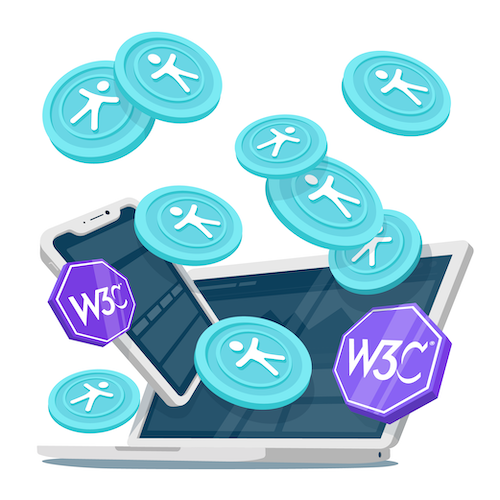15 Ways to Improve Web Accessibility
An estimated 15% of the world’s population has some form of permanent disability. There are also temporary disabilities — such as musculoskeletal injuries that impede movement — and age-related, degenerative disabilities such as low vision.
Disability may limit how a person can interact with their environment, including the internet. But fully accessible websites, along with assistive technology, can help users with disabilities enjoy the benefits of being online. Unfortunately, many websites have accessibility problems that prevent people with disabilities from interacting with site content.
If you take the step to make your website accessible, you might find yourself with a big edge over the competition. People with disabilities are likely to become loyal customers of websites that work well for them, and word-of-mouth marketing can be significant among these groups.
So, let’s take a look at some reasons to improve your website accessibility, along with 15 practical steps for doing so.

3 Reasons to Improve Web Accessibility
Social Impact
Economic opportunity
Legal compliance
Websites may be subject to a number of accessibility regulations, such as the Web Content Accessibility Guidelines (WCAG), the California Consumer Privacy Act, and the General Data Protection Regulation. And while the Americans with Disabilities Act (ADA) does not apply to websites specifically, courts have cited ADA requirements in cases about website accessibility.
Failing to comply with accessibility requirements could raise the risk of penalties and civil action, as these examples demonstrate:
– In June 2017, a blind man sued the American supermarket chain, Winn-Dixie and won because the chain had failed to make its website accessible to blind users.
– In 2016, Target paid $6 million in damages to the National Federation of the Blind for accessibility issues that included failing to include alt tags for their product images.
– In June 2021, a judge ruled that Domino’s Pizza had violated Title III of the ADA, because its website was inaccessible to the plaintiff, who was blind.
These are just some of the legal cases involving web accessibility issues.
How Disabilities May Limit Website Interactions
Now that we’ve covered the main reasons to improve website accessibility, let’s look at how certain disabilities may impact a person’s interaction with websites:
- Visual impairments
A person who has low vision may need assistive reading technology to understand website content. Other visual impairments — such as color blindness, or difficulty detecting contrast — may interfere with a person’s ability to read or interpret content.
- Auditory impairments
Hearing impairments interfere with a person’s ability to interpret audio, so text alternatives to audio files should be available.
- Motor impairments
People with motor impairments may be unable to use a mouse, to complete an action before it “times out,” or to click on small, precise areas.
- Cognitive and neurological impairments
People who have cognitive or neurological impairments may have difficulty looking at flickering content, reading large blocks of text, or understanding complex navigation.
15 Practical Ways to Improve Web Accessibility
Include captions and text transcripts
Use proper color contrast ratios
Poor color contrast can make it difficult for users with color blindness to read text. The WCAG recommends a color contrast ratio of 4.5:1 for text that appears over a background color or image.
If you don’t have a graphic designer on hand, the easiest way to make sure your site uses proper contrast is to use a contrast checker, a tool that scans your site’s text colors and backgrounds.
Remove flickering content
Use headings to structure content
Assistive reading technology scans content for headings to interpret the structure of a webpage. Make sure headings follow the correct hierarchy, starting with a title, then H1, then H2 headings for all subheadings. You can include H3 and H4 headings under H2s, if it works with the structure of your content.
Simplify website designs
Add image alt text
Add labels and titles to forms
Offer different CAPTCHA options
Make your site keyboard-friendly
Allow more time for data inputs
Avoid using tables for content layouts
Use descriptive link text
Include skip links
Include multiple contact options
Test and improve web accessibility
Building an Accessible Website Is the Right Thing to Do
With few exceptions, businesses don’t need to completely rebuild their websites to make them accessible. So there’s no reason to delay focusing on accessibility.
An accessible website demonstrates a company’s commitment to inclusivity. It also presents opportunities to reach new users and improves the user experience for people of all abilities. Making your website accessible is the right thing to do.
Monsido helps companies bring their websites into compliance with modern accessibility standards. We use automated accessibility testing and human expertise to evaluate websites and provide detailed recommendations for improving accessibility. Learn more about our platform, and contact us when you’re ready to make your website fully accessible.
For more tips on web accessibility, be sure to check out our “Web Accessibility 101” webinar.




